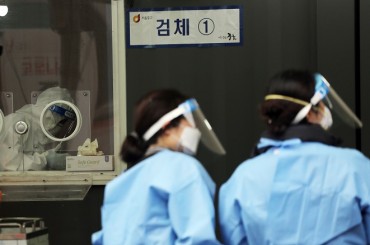
Suicide prevention campaign promotional materials created by the Korea Foundation for Suicide Prevention (KFSP)
SEOUL, Sept.11 (Korea Bizwire) — In South Korea, a country unfortunately known for having the highest suicide rate within the OECD, the term “psychological autopsy” has recently gained prominence.
A psychological autopsy is an investigative approach that analyzes the statements and records left behind by individuals who have taken their own lives. Its purpose is to uncover the specific factors that contributed to the individual’s death by examining various influences leading up to the tragedy.
The primary goal of conducting a psychological autopsy is to provide valuable insights to the grieving family, aiding them in understanding the life of the deceased and initiating a healthy grieving process.
Furthermore, these investigations can serve as a foundation for developing comprehensive suicide prevention programs within society.
In a positive example from Finland, the implementation of suicide prevention policies based on psychological autopsies led to a remarkable 45.7 percent reduction in the suicide rate, dropping from 30.2 per 100,000 people in 1990 to 16.4 in 2011.
In South Korea, the Korea Association for Suicide Prevention embarked on interviews with family members of suicide victims in 2009, with the support of the Ministry of Health and Welfare.
In 2014, the Korea Foundation for Suicide Prevention took over the responsibility for psychological autopsies through the Central Psychological Autopsy Unit under the Ministry of Health and Welfare.

The primary goal of conducting a psychological autopsy is to provide valuable insights to the grieving family, aiding them in understanding the life of the deceased and initiating a healthy grieving process. (Image courtesy of freepik)
Cho Jeong-ok, who has conducted psychological examinations for families of suicide victims since 2018, shared, “Some families affected by suicide may find it difficult to discuss their memories of the deceased.
They often lack the opportunity to fully express their grief, but keeping emotions hidden and avoiding discussion is not a healthy way to cope with loss.”
Psychological autopsies remain an unfamiliar concept in South Korea for both those who have lost loved ones to suicide and the general population, despite the country maintaining the highest suicide rate among OECD nations.
According to Statistics Korea, there were a provisional 12,720 suicide deaths reported last year.
However, the Korea Foundation for Suicide Prevention, an organization established in April 2021 to centralize support for suicide prevention policies, reported that only 169 relatives of 159 suicide victims participated in psychological autopsies last year, representing just 1.3 percent.
Cho argues that societal stigma and negative perceptions surrounding suicide contribute to this low participation rate. He emphasizes, “Suicide is not solely an individual problem or the fault of the bereaved family. We must acknowledge that suicide is a societal issue that requires collective efforts to address.”
Cho calls for increased government efforts to encourage more bereaved families to engage in psychological autopsies, advocating for the establishment of additional rewards and support systems for these families.
Lina Jang (linajang@koreabizwire.com)






